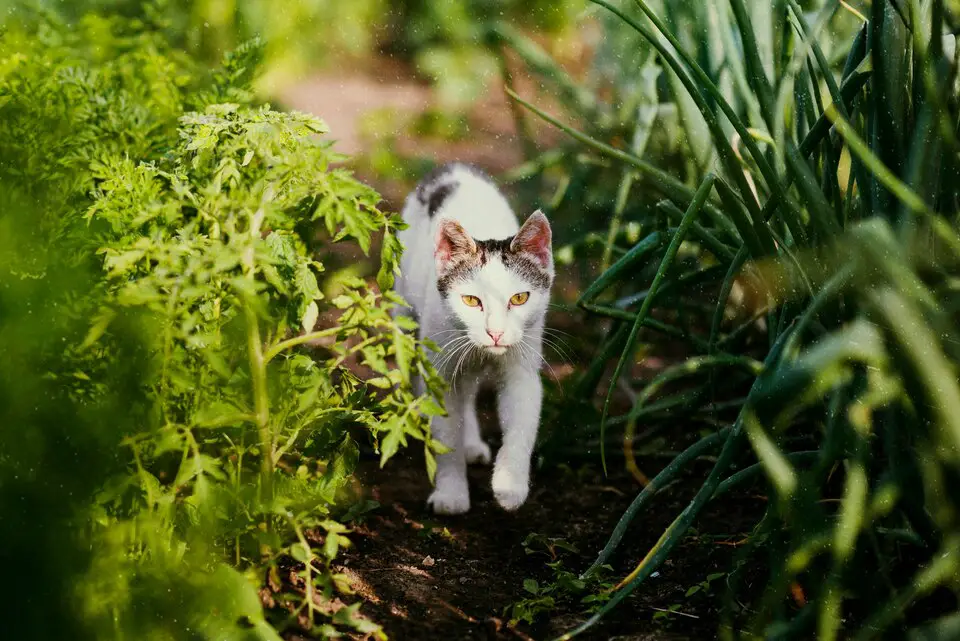Allowing your beloved feline companion to bask in the wonders of the outdoors can be a source of wonderful joy, but it also arrives with its share of concerns. Cat-proofing your garden is the answer, striking a harmonious balance between freedom and safety. In this guide, we delve into creating a secure outdoor haven for your cat, exploring the vital aspects of understanding their needs and implementing practical measures to ensure their well-being while they savor the open air.
Understanding Your Cat’s Needs
As a responsible cat owner, it’s crucial to understand your feline companion’s needs, especially when it comes to outdoor adventures. Here’s what you need to know:
- The Natural Instinct to Explore: Cats are natural explorers, and their curiosity drives them to venture beyond the confines of your home. It’s crucial to acknowledge and respect this instinct while ensuring their safety.
- Balancing Safety and Freedom: Outdoor access provides enrichment and mental stimulation for your cat. However, balancing granting them the freedom to explore and keeping them safe from potential hazards is essential.
- The Dangers of Unsecured Outdoor Access: Allowing your cat unrestricted outdoor access can expose them to various dangers, including traffic, predators, toxins, and infectious diseases. Understanding these risks is the first step in keeping your cat safe.
Creating a Safe Garden Sanctuary
Creating a safe outdoor haven in your garden is key to providing your cat with a secure and enjoyable outdoor experience. Here’s how to go about it:
- Choosing Cat-Friendly Plants: Selecting non-toxic plants for your garden is vital. Research cat-safe varieties and avoid toxic plants like lilies, oleander, or azaleas, which can be harmful if ingested.
- Secure Boundaries and Fencing: Install secure boundaries to prevent your cat from wandering into unsafe areas. Cat-proof fencing or enclosures can keep your cat within your garden’s confines.
- Providing Shaded and Sheltered Areas: Your garden should offer shaded spots and shelters where your cat can retreat in hot or rainy weather. Cat-friendly furniture, such as outdoor cat houses, can provide comfort and safety.
- Encouraging Exploration with Cat Furniture: Incorporate cat-friendly features like scratching posts, climbing structures, or cat trees into your garden. These enriching additions can entice your cat to explore and play safely.
Tips for Cat-Proofing Your Garden
Here are some practical tips for cat-proofing your garden to ensure your feline friend’s safety:
- Selecting Non-Toxic Plants: Choose cat-friendly plants like catnip, mint, or lavender that are safe for cats and can add sensory stimulation to your garden.
- Cat-Proof Fencing Solutions: Install cat-proof fencing or enclosures to keep your cat within the garden’s boundaries, preventing access to neighboring properties or hazardous areas.
- Installing Motion-Activated Sprinklers: Motion-activated sprinklers can deter unwanted visitors, like neighborhood cats or wildlife, from entering your garden and potentially causing stress to your cat.
- Using Natural Deterrents: Natural deterrents like citrus peels, coffee grounds, or cayenne pepper can help discourage cats from digging or using certain areas as litter spots.
- Avoiding Harmful Chemicals: Refrain from using toxic pesticides or herbicides in your yard, as those chemicals can harm your cat if ingested or if they walk on treated surfaces.
Training Your Cat for Outdoor Adventures
Preparing your cat for safe outdoor exploration requires patience and careful training. Here are essential steps to ensure your feline friend enjoys their outdoor time responsibly:
- Leash Training and Harnesses: Introduce your cat to a harness and leash indoors. Allow them to get comfortable with these accessories before venturing outside. Start with short sessions in a secure area and gradually increase the duration.
- Supervised Outdoor Time: Initially, accompany your cat during outdoor excursions. This supervision helps ensure their safety and provides comfort in unfamiliar surroundings.
- Teaching Recall Commands: Train your cat to respond to recall commands, such as calling their name or using a specific sound. This skill can be invaluable in redirecting their attention or calling them back to safety if needed.
- Recognizing Signs of Stress or Discomfort: Pay close attention to your cat’s body language. If they display signs of stress, fear, or discomfort, such as flattened ears, dilated pupils, or excessive vocalization, it’s time to end the outdoor session and return to the safety of the indoors.
Training your cat for outdoor adventures requires time and patience, but it’s a rewarding endeavor that allows your feline companion to enjoy the outdoors safely.
Q&A Section
Is it safe to let my cat roam freely outdoors?
Free-roaming cats face various risks, including traffic accidents, predators, and diseases. Creating a cat-friendly garden with secure boundaries is a safer alternative for outdoor exploration.
What plants should I avoid in my garden to keep my cat safe?
Toxin-containing plants like lilies, oleander, or azaleas should be avoided. Instead, opt for cat-friendly plants like catnip, mint, or rosemary.
How can I educate my indoor cat to enjoy the outdoors safely?
Start with leash training or supervised outdoor time in a secure enclosure. Gradually introduce them to the outdoor environment to ensure a positive and safe experience.
What are the benefits of supervised outdoor time for cats?
Supervised outdoor time provides mental and sensory stimulation, exercise, and a change of scenery, enhancing your cat’s overall well-being.
Are there natural solutions to keep unwanted critters out of my cat-friendly garden?
Natural deterrents like citrus peels, coffee grounds, or cayenne pepper can help keep unwanted critters away without harming your cat.
Conclusion
Cat-proofing your garden is a thoughtful and responsible way to provide your cat with the joys of outdoor exploration while ensuring their safety. By understanding your cat’s needs, creating a safe garden sanctuary, and implementing cat-proofing tips, you can offer your feline friend a secure and enriching outdoor experience.

